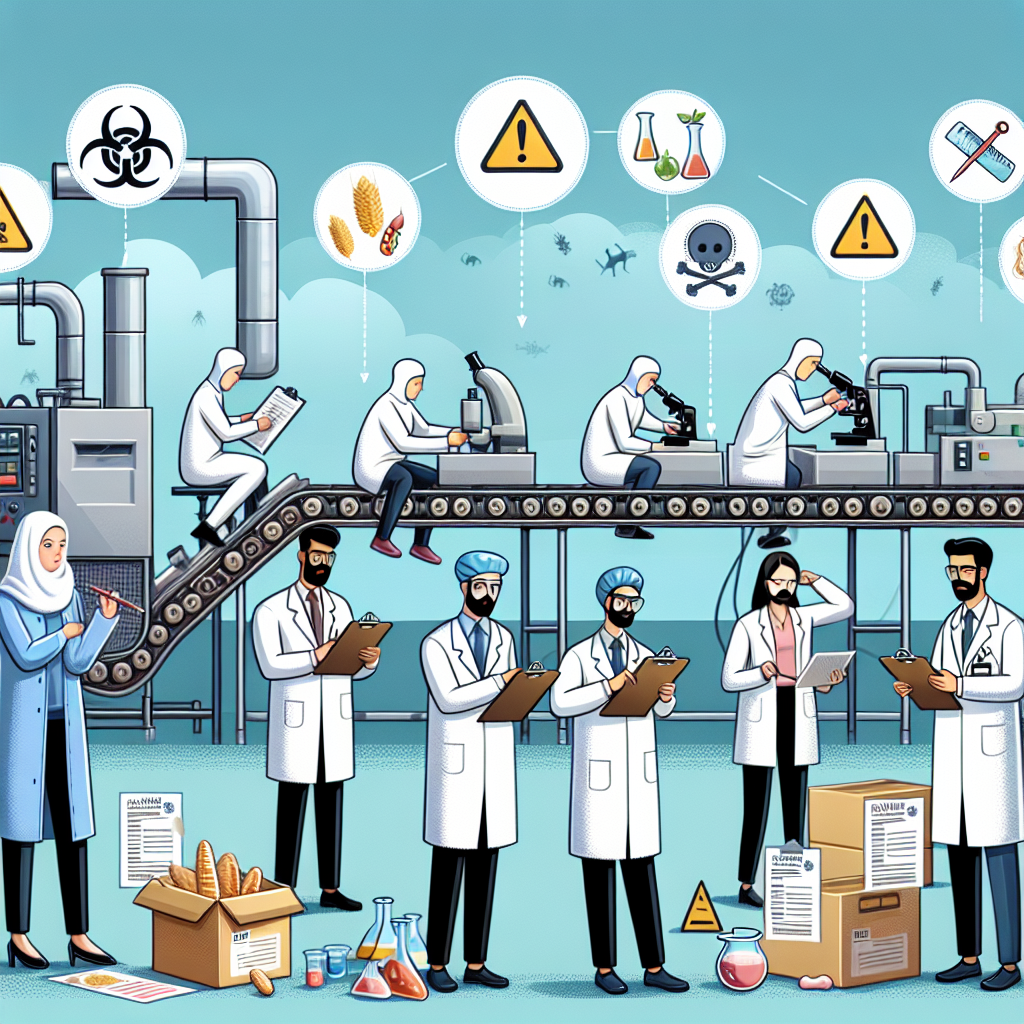This article discusses the importance of proper training and education for the effective implementation of Hazard Analysis Critical Control Points (HACCP) in food processing environments.
Introduction to HACCP
Hazard Analysis and Critical Control Points (HACCP) is a systematic preventive approach to food safety. It involves identifying physical, chemical, and biological hazards in production processes that can cause the finished product to be unsafe, and designing measurements to reduce these risks to a safe level.
In this article, we will explore how organizations can train their employees on HACCP principles and effectively implement these practices in a food processing environment.
Understanding the Importance of HACCP
HACCP is essential because it focuses on preventing hazards rather than inspecting finished products for the effects of those hazards. The implementation of HACCP is fundamental in managing food safety and is recognized internationally as a viable tool for ensuring food quality and safety. It not only helps ensure compliance with regulatory laws and industry standards but also boosts the confidence of consumers in food safety.
Step 1: Developing a HACCP Team
The first step in implementing HACCP is to establish a team with varied knowledge and experience related to your specific food processing environment. The team should include individuals with expertise in areas such as quality assurance, technical operations, microbiology, and anyone else who has a direct connection to the daily functioning of the process lines.
Step 2: Describing the Product and Its Distribution
The HACCP team needs to develop a full description of the product that outlines its intended use by the end consumer. This description should include all relevant safety information like the compositional formula, the conditions under which the product will be stored, and how it will be distributed.
Step 3: Identifying Intended Use and Consumers
The HACCP team should comprehensively identify the intended use and target consumers. This may include specifications of different demographic groups such as the elderly, infants, or populations susceptible to allergies.
Step 4: Constructing Flow Diagrams
Create detailed flow diagrams that outline every step of the process in your food production. This should include all steps from the initial receipt of raw materials to the end-product distribution. The flow diagram needs to be clear, accurate, and sufficient enough to cover all process steps under the HACPA plan.
Step 5: On-Site Verification of Flow Diagrams
Once the flow diagram is developed, the HACCP team should verify its accuracy by reviewing every step onsite to ensure it completely represents the production process.
Step 6: Conducting a Hazard Analysis
In this critical stage, the team needs to list all potential hazards associated with each process step, conduct a hazard analysis, and identify control measures. The analysis involves evaluating the likelihood and severity of each hazard.
Step 7: Determining Critical Control Points (CCPs)
Identify the points in the production process where identified hazards can be effectively controlled or minimized. These points, known as Critical Control Points, are crucial for the HACCP plan.
Step 8: Establishing Critical Limits
For each CCP, establish critical limits that must be met to ensure each control point adequately controls the hazards. Typically, these could include measurements like temperature, time, or pH.
Step 9: Monitoring Procedures
Developing procedures to monitor the critical limits at each CCP is essential. Monitoring activities should be able to detect loss of control at the CCP and record these instances for verification purposes.
Step 10: Establishing Corrective Actions
Identify corrective actions to be taken when monitoring indicates that particular CCP is not under control. The actions should aim to ensure no product that might be unsafe is released.
Step 11: Verification Procedures
The HACCP team should establish procedures for verification. Verification should include routine activities that confirm the HACCP plan is working effectively across all stages of production.
Step 12: Record-Keeping and Documentation
Maintaining comprehensive records is an essential part of the HACCP plan. Documents should include details about the hazard analysis, CCP identification, critical limits, monitoring system, and actions taken in response to deviations.
HACCP Training and Education
Effective implementation of HACCP requires comprehensive training and education at all levels of the organization. Training programs should cover the basics of HACCP, the specific roles of each team member, and the detailed plans and processes for each product line.
Implementing HACCP in food processing is not just about compliance with regulations; it is a commitment to safety and quality that safeguards public health and enhances product integrity. The successful application of HACCP depends on the thorough understanding and correct application of its principles from the top management to the operational staff.
Training and continuous education are indispensable to the sustainability of the HACCA plan, as they equip personnel with the knowledge and skills needed to manage and mitigate potential hazards effectively. By investing in proper training and rigorous implementation of HACCP principles, a food processing facility can achieve not only regulatory compliance but also gain competitive advantage in the market.




